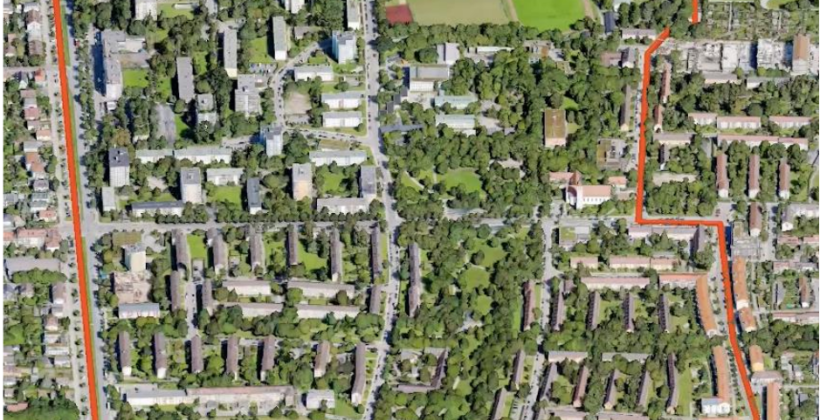
Location
Description
In the project district Harthof, many activities mostly included preparations and planning for starting the construction activities in 2024, which had an intensive analysis of the structure of the area as a first step. These include planning for buildings for energy communities, serial refurbishment, energy monitoring in buildings, PV instalments, and mobility aspects, such as opening a first mobility station for seniors.
Due to the structure of ownership in the project area, large parts are owned by public housing GWG, here the preparations for the implementation started. One challenge is to motivate the private owners to get involved, a first events took place to introduce the project, an office in the project district was opened for consultations, and concepts for online participation platforms developed.
A cross-cutting theme, which all other solutions will profit from are the developments in the digital ecosystems. The initial version of a project portal for shared planning information was set up and 3D Site Model of the district established, including the interface with the KPI engine.
Demo Site Expected Impact
The City of Munich chose the Harthof district to put the concept into practice and show what a PCED might look like and what strategies and technologies might be used to achieve climate neutrality. The main focus will be on developing and expanding citizen engagement, mobility, data, and above all energy via innovative new strategies. The City of Munich is teaming up with partners from science and business to test and implement over 20 different strategies to make the district produce more energy than it consumes. In addition, other measures focus on collaborating with local citizens to make the district a cleaner and more appealing place to live.
The programme is at the beginning of its implementation, but the integrated neighbourhood approach is a central element of the City of Munich's efforts to achieve climate neutrality by 2035. In the best-case scenario, the EU project ASCEND will be a blueprint for other neighbourhoods in Munich and can also be applied in other cities and municipalities. In Munich, we estimate that around 30-40% of the city could be renovated using this model. This would be a major lever for the overarching goal.
Technologies
Buildings and energy
Demolition/new construction in high-efficiency standard (German standard efficiency-house (EH) 40): 1 building (start of construction 2025): Coordination of façade and roof greening, PV, mobility concept, Neighbourhood management space, energy monitoring, wall boxes, underground waste collection; Serial refurbishment: 4 buildings preparation planning and concept development; containers; Energy monitoring planned and tendered for approx. 12 buildings.
Mobility & Transport
Innovative charging interventions will be implemented. A fast charging station will be used at 2-3 locations in the project area to evaluate the locations.
ICT
Initial version of project portal and 3D site model available.
Positive (clean) energy district
Positive Clean Energy Districts are the core of ASCEND. They consist of 5 pillars: Active citizenship, Zero-carbon frugal buildings, Smart energy grids, Decarbonised public spaces and mobility and Digital tools. All pillars revolve around an 'urban orchestrator’ - a public entity aggregating all components and services of a PCED - to implement long-lasting change at district level.
